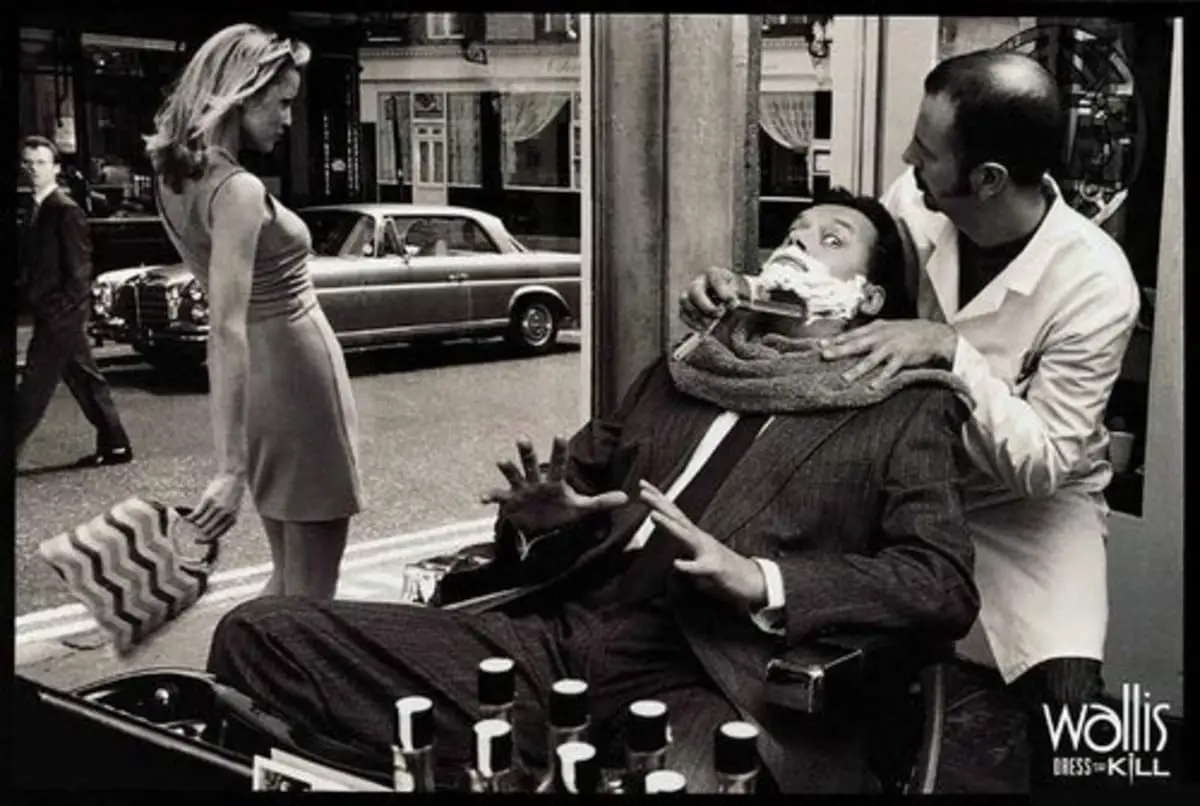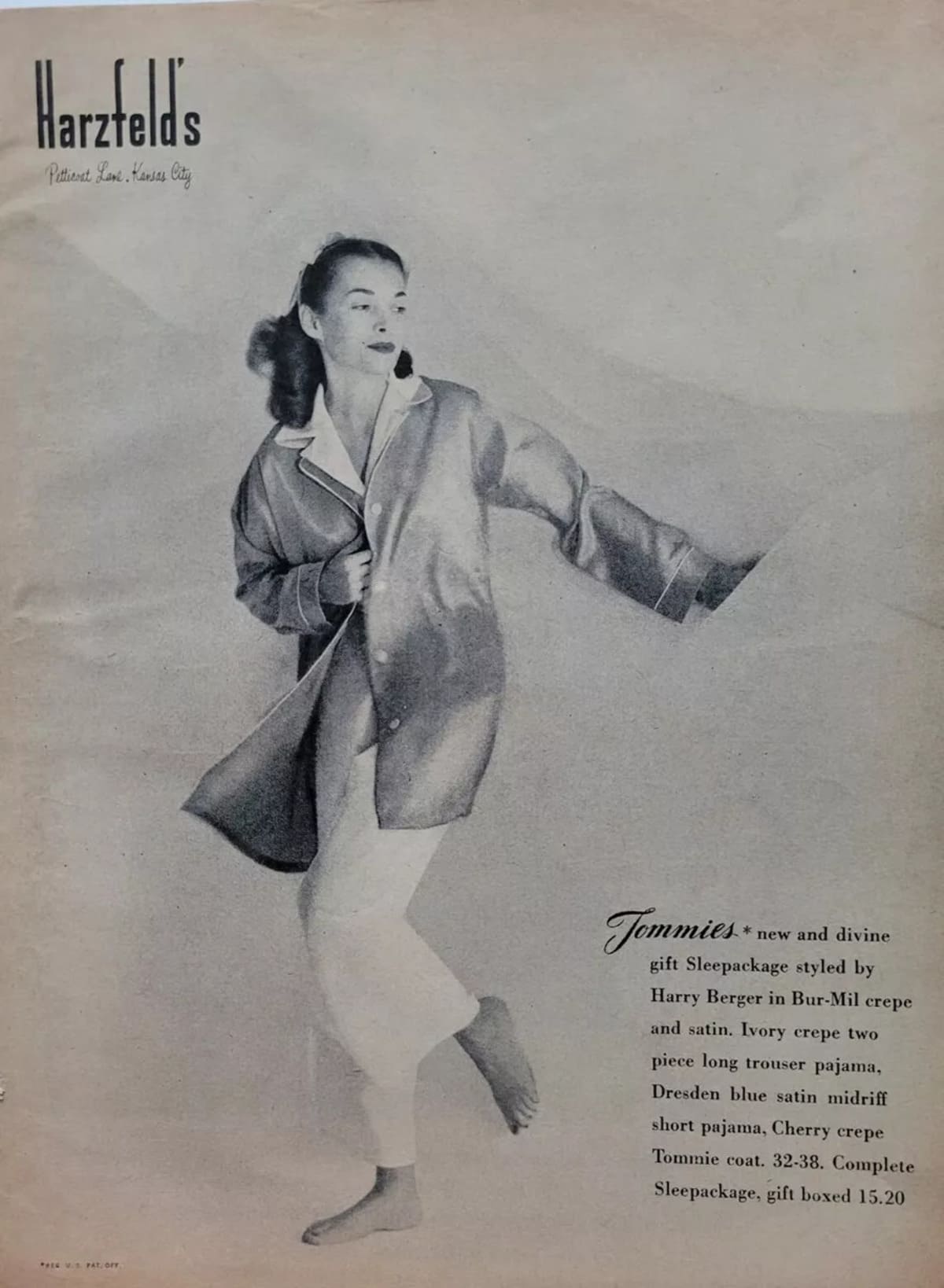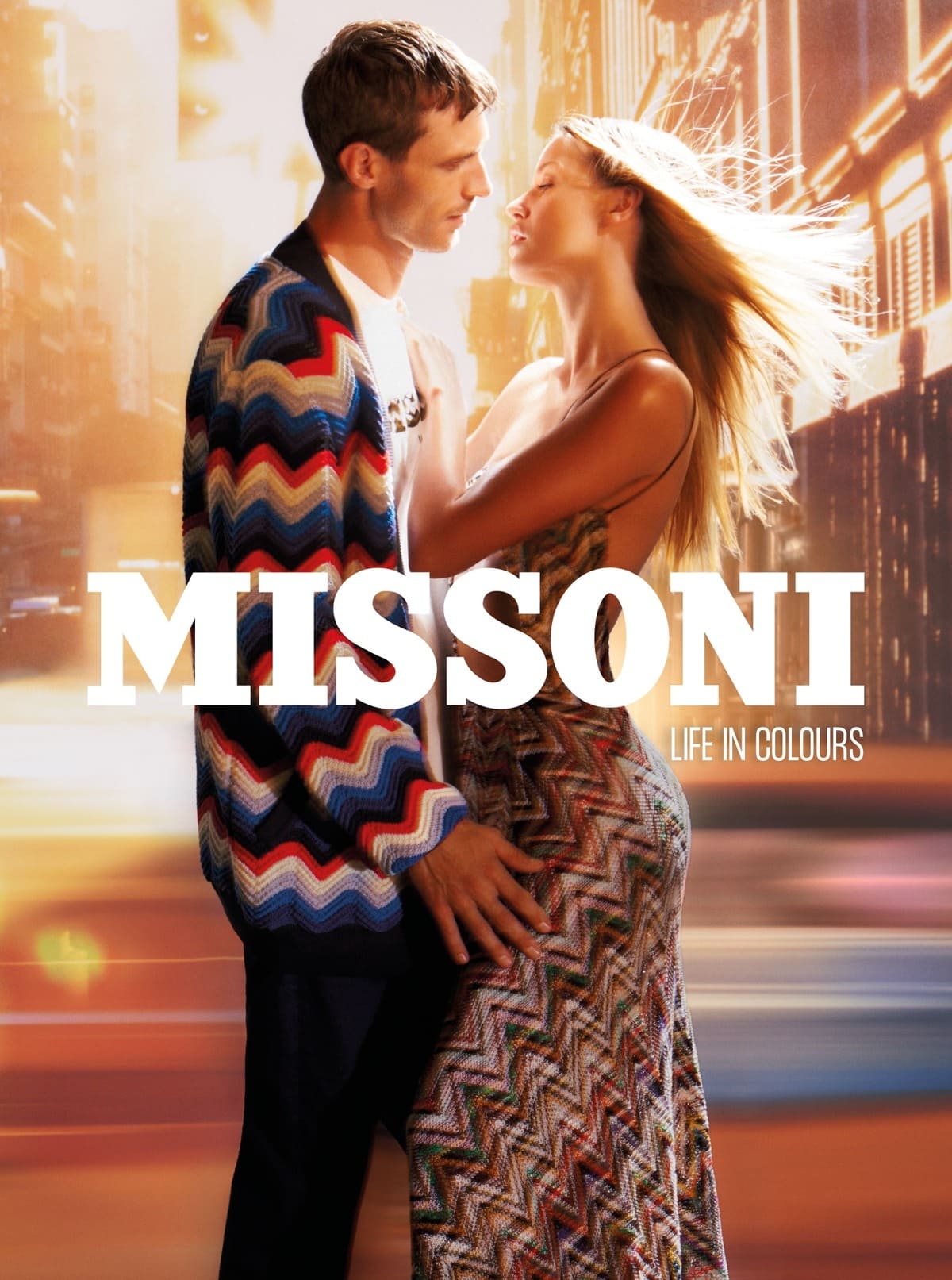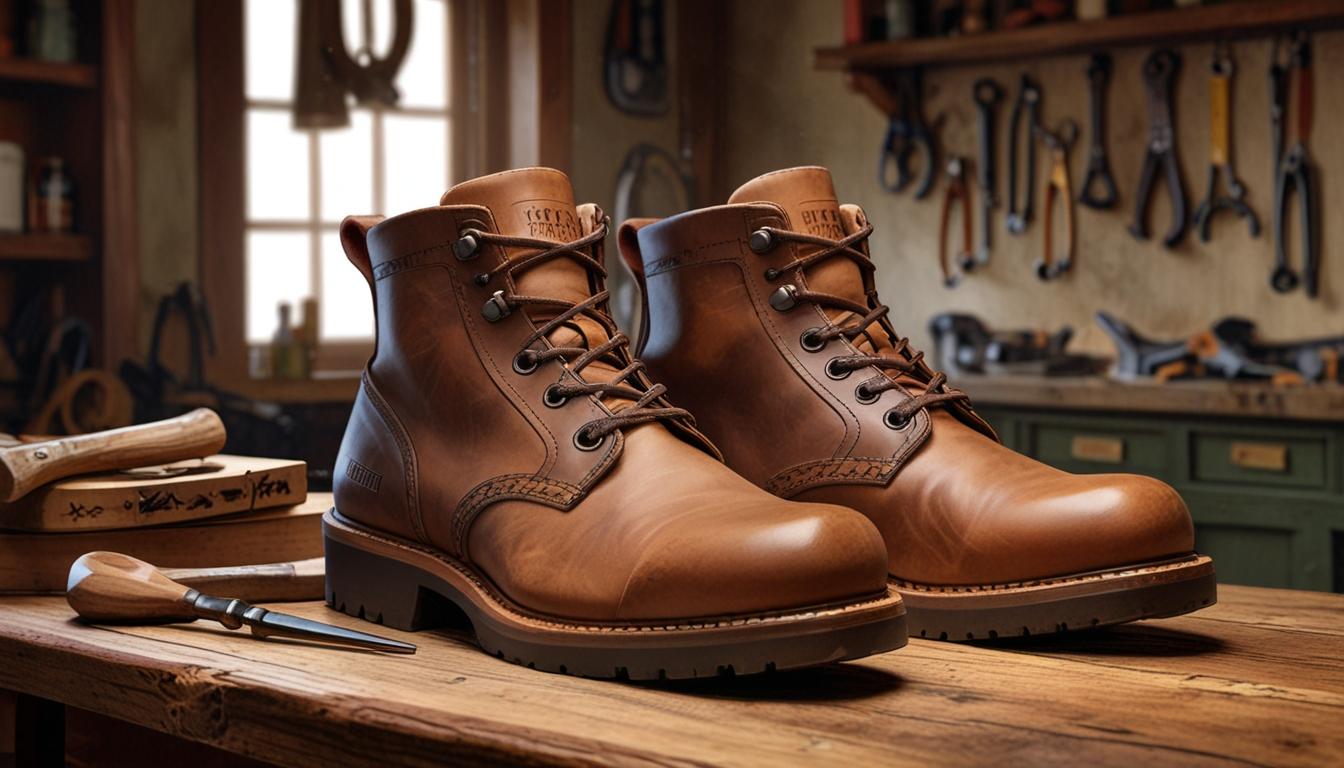Wallis, a name synonymous with timeless elegance and refined fashion, has a rich history that spans nearly a century. Founded in 1923 by Raphael Nat Wallis in Chapel Market, Islington, the brand quickly established itself as a go-to destination for quality coats and dresses. With its bold slogan, “Comparison invited. Competition defied,” Wallis set the stage for a fashion empire that would grow significantly over the decades. From its humble beginnings, the brand expanded rapidly, and by the 1940s, it boasted 25 shops across the UK with an impressive annual turnover. Wallis became known not only for its quality garments but also for its ability to capture the essence of high fashion at a fraction of the cost, making luxury accessible to the everyday woman.
The 1960s marked a pivotal moment for Wallis as it embraced the swinging fashion trends of the era. Under the leadership of Jeffrey Wallis, the brand began offering exact replicas of Parisian haute couture, gaining a loyal following among London’s socialites and working women alike. The introduction of its “Paris Originals” line, which featured meticulously crafted copies of designs from legendary fashion houses like Chanel and Dior, cemented Wallis’s reputation as a trendsetter. This move not only kept the brand at the forefront of fashion but also made it a favorite among women who wanted to wear the latest styles without the exorbitant price tags. Wallis’s influence extended beyond the UK, with its designs reaching international markets and drawing attention from buyers around the globe.
As the decades passed, Wallis continued to evolve, adapting to changing fashion trends while staying true to its roots of offering stylish, high-quality clothing. The brand’s expansion into international markets and its eventual integration into larger retail groups like Sears and the Arcadia Group showcased its resilience and appeal. Even in the face of challenges, including the collapse of Arcadia in 2020, Wallis found a new lease on life under the ownership of Boohoo.com, where it continues to operate as an online retailer. Throughout its history, Wallis has remained a beloved brand, celebrated for its ability to blend classic designs with contemporary fashion, making it a staple in the wardrobes of women across generations.
Wallis TV Commercial
How to tell if Wallis is vintage from the logo
Wallis, a British fashion brand known for its classic yet stylish clothing, has undergone various logo changes throughout the decades. The logo evolution of Wallis reflects the brand’s efforts to stay modern while retaining its heritage. Here’s how you can identify whether your Wallis piece is vintage based on its logo.
1960s to now Wallis logo
- This logo features the iconic Wallis name in a bold, elegant font.
- The font style is characterized by its clean lines and simple, modern aesthetic.
- While the basic structure of the logo has remained consistent, minor adjustments in font thickness and spacing have occurred over time.
- Items with this logo can span from the 1960s to the present day, making it essential to consider other factors, such as garment tags and material, to determine the specific era of the piece.

1960s to now Wallis logo
How to tell if Wallis is vintage from the tags
Wallis, a prominent British fashion retailer, has a rich history that is reflected in the evolution of its garment tags. Over the decades, Wallis tags have transformed in design, materials, and branding styles, providing valuable clues for identifying vintage pieces. The following guide breaks down the characteristics of Wallis tags by decade, helping you determine the era of your Wallis garments.
Need help with vintage tags or labels? Submit a picture on our vintage tag identification page, and we’ll take care of it!
1970s vintage Wallis tags
- Tags often feature a cursive “Wallis Exclusive” in light blue thread, giving a delicate and refined appearance.
- Some tags are rectangular with “Wallis” in a rounded, stylized font, typically with sizing information such as “10” or “12” integrated into the design.
- Materials used for the tags are generally soft fabrics, consistent with the era’s focus on quality and detail.
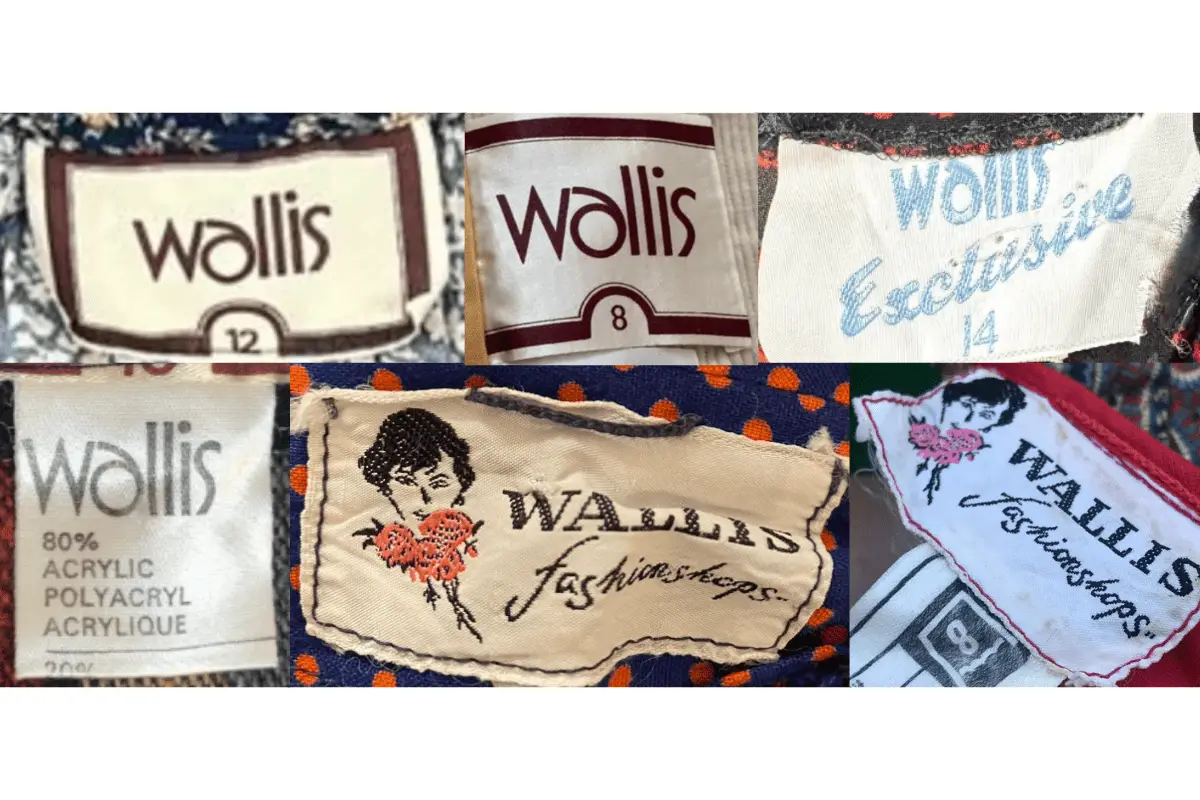
1970s Wallis tags
1980s vintage Wallis tags
- The 1980s tags feature a shift to a more modern, streamlined font, often with “Wallis” in a bold, minimalist design.
- Tags from this era sometimes include additional product information, such as fabric composition (e.g., “80% Acrylic”) on a separate, attached tag.
- Designs also include tags with a distinctive red and black color scheme, emphasizing the brand’s evolving identity during this period.
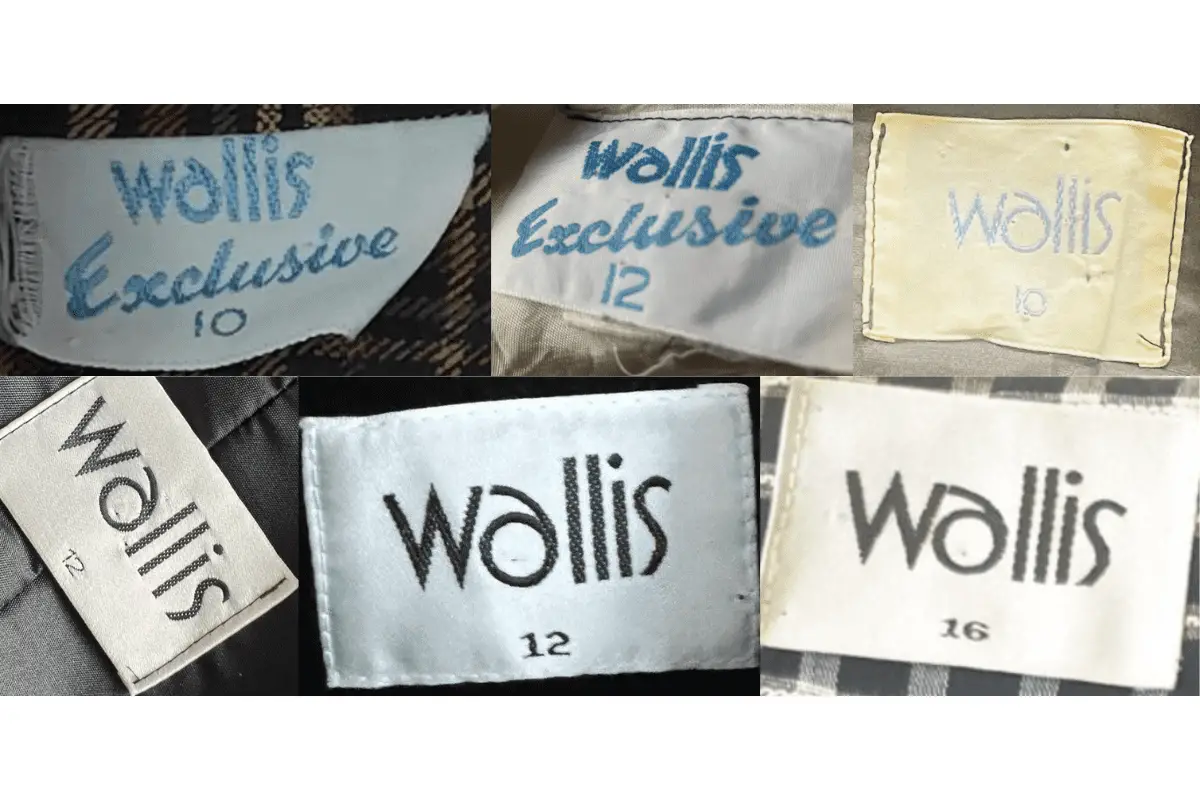
1980s Wallis tags
1990s vintage Wallis tags
- Wallis tags in the 1990s moved towards a more standardized design with “Wallis” in a clean, bold font, often with clear size indicators.
- Some tags from this decade feature “Wallis petite” in a smaller, refined font, catering to specific garment lines.
- Tags were often found in neutral colors like black or beige, with a strong focus on simplicity and functionality.
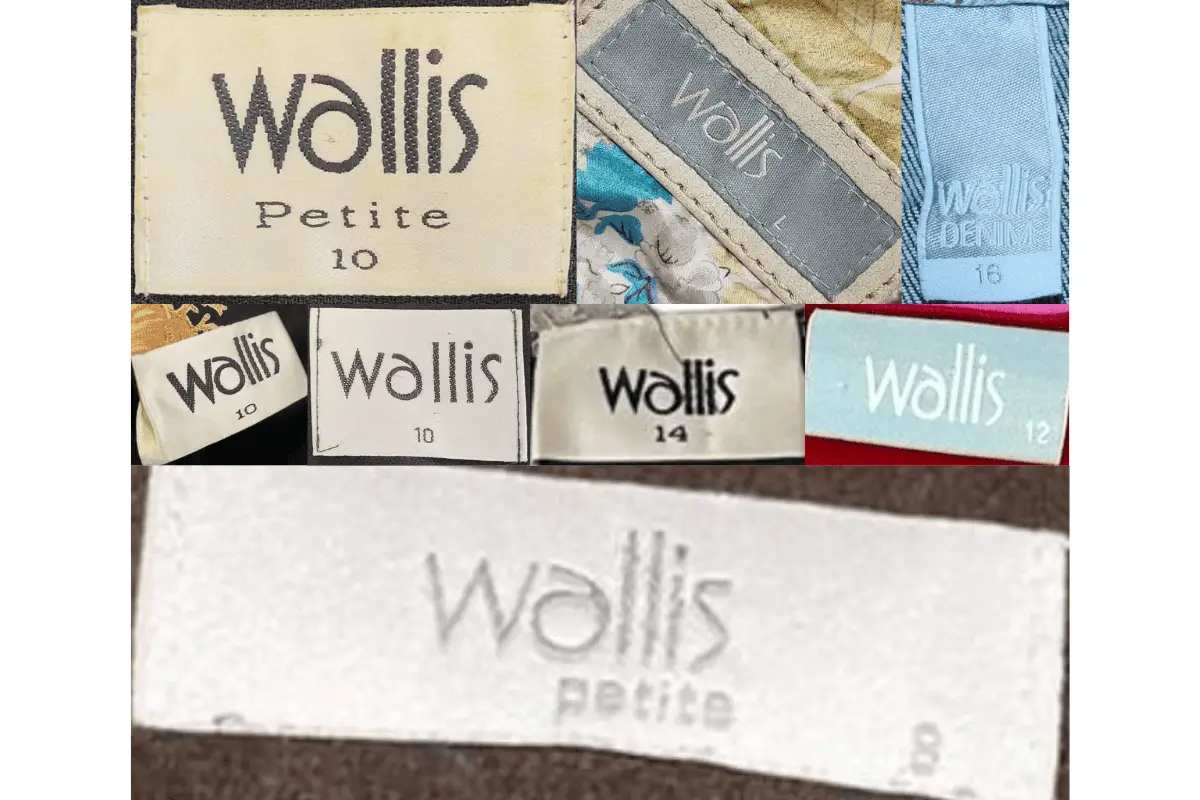
1990s Wallis tags
2000s vintage Wallis tags
- In the 2000s, Wallis tags continued to adopt a minimalist approach with “Wallis” in a sleek, sans-serif font, often embroidered onto the fabric.
- Tags from this era might include additional labels for specific lines, such as “Wallis Denim,” indicating the diversification of the brand’s offerings.
- Materials used for the tags became more synthetic, reflecting the broader industry trends towards cost-effective production methods.
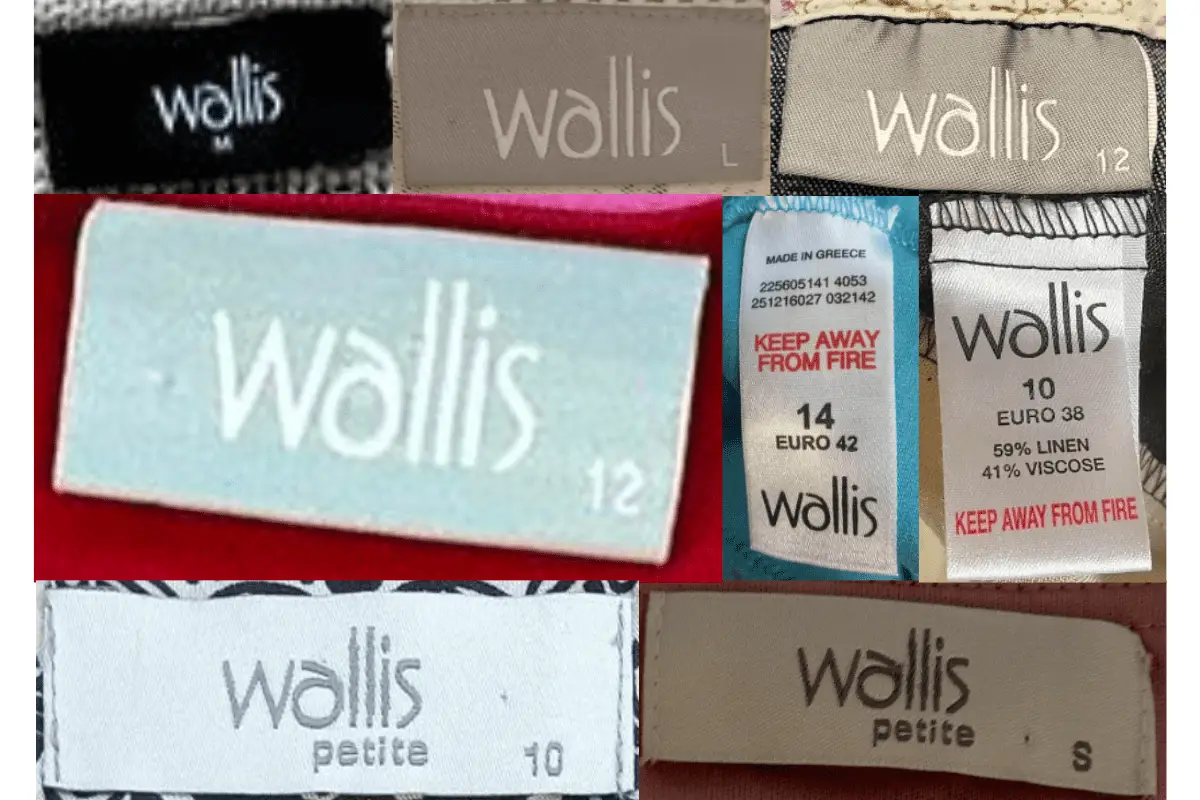
2000s Wallis tags
2010s vintage Wallis tags
- The 2010s saw a further refinement in tag design, with “Wallis” often featured in a modern, streamlined font on a variety of background colors.
- Tags in this decade frequently included additional information, such as care instructions and fabric compositions, printed in a clear, concise format.
- The use of metallic or reflective materials on the tags became more common, adding a touch of contemporary style to the brand’s identity.
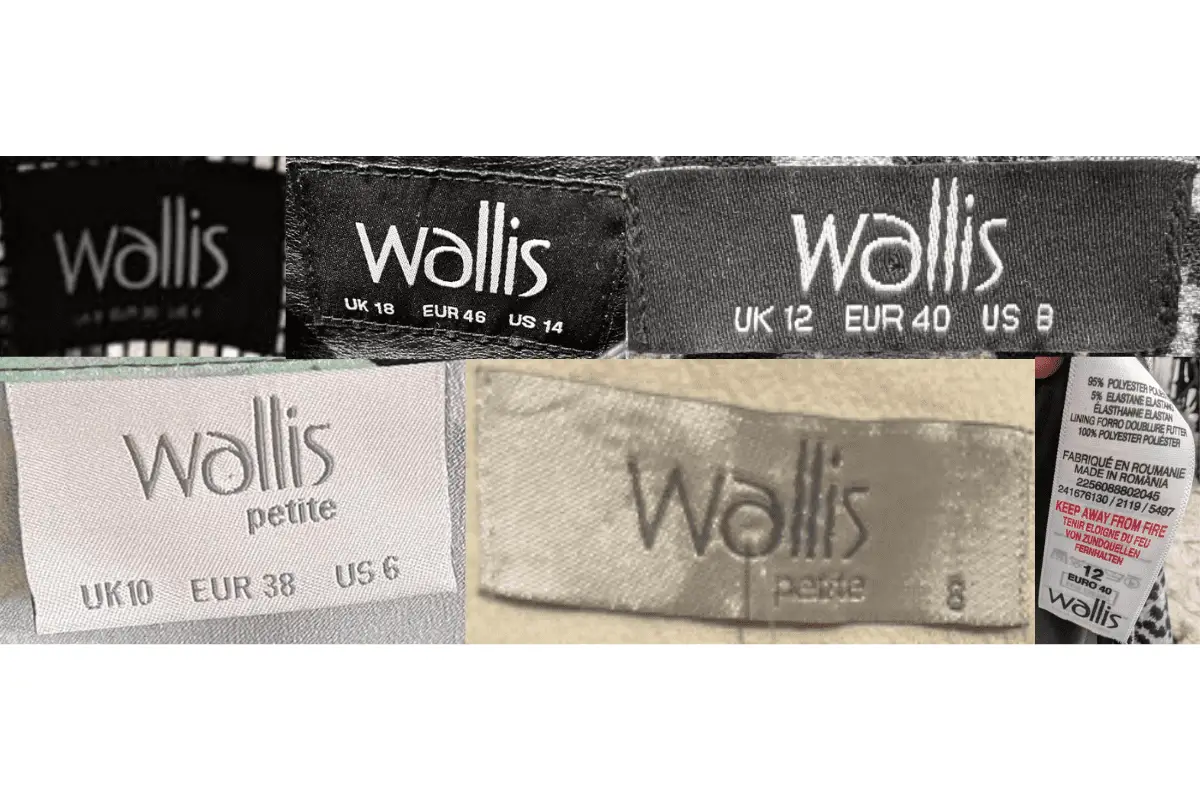
2010s Wallis tags
